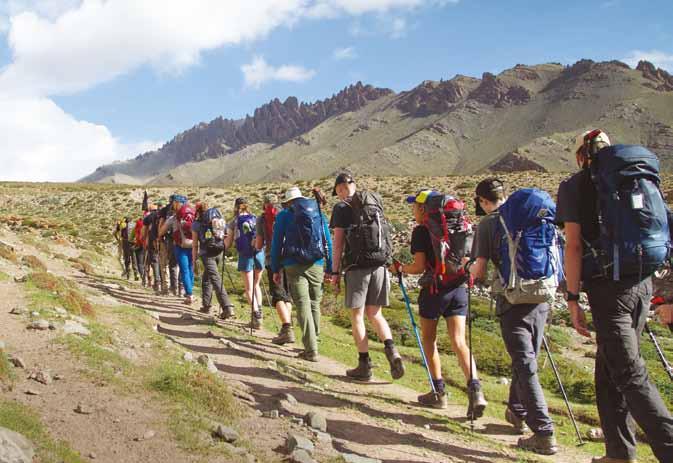
2 minute read
Archivist’s Account
David jones
LEST WE FORGET?:
the PeRSe WAR memORiALS
If Old Perseans were asked how many war memorials there are in the School, most would probably say two – the wooden memorial boards to two World Wars. These currently hang on the stairs to the Hall Gallery, but OPs may remember them on the back wall of the former gym, and before that in the Hall at Gonville Place.
in fact there are seven. Those who remember the old Upper Library might recall the brass plate beside the left-hand door to the gallery. That records the deaths of two Old Perseans in the Boer War, one of whom had the misfortune to be killed after the armistice, news travelling slowly over the wide field of combat.
The pavilion of 1931 was originally known as the Macfarlane-Grieve pavilion, for it commemorates Alwyn Macfarlane-Grieve, killed in the First World War. It was paid for by his family and now houses the School’s medical centre.
The fifth memorial is the School’s main entrance gates. These were completed in 1953 as a further memorial to the dead of World War Two, the War Memorial Fund having raised so much money.
In 2015, the School acquired 88 poppies from the Blood Swept Lands and Seas of
Red exhibition at the Tower of London, through a generous donation from a parent. These commemorate Old Perseans who died in World War One and are on display in the North Building.
And the seventh? That was long forgotten, and unknown even to this writer until recently. A chance discovery in the archive revealed that the field purchased in 1923, the one that lies towards Luard Close and Sedley Taylor Road, was also intended as a memorial to the fallen of the First World War. As explained in an earlier article (OP News, Spring 2016), it was once known as the Bowden Field in recognition of the funds supplied by Sir Harold Bowden of Raleigh Bikes. Incidentally, his link to the School has also been recently discovered: he was a friend of Lord Crewe, who in turn was a supporter of The Perse. The First World War memorial board, carved by Old Persean Cyrus Johnson, was unveiled in the Hall at Gonville Place by General Lord Horne, on 21 May 1921. Next time you happen to be on the school field, you might like to glance past the First xI square towards Sedley Taylor Road and contrast the peacefulness of the scene with the nightmare fields of the Western Front. That field honours the Perseans who never came home from that war, one hundred years ago this November.
david Jones joined the Perse in 1974 as a history teacher and was House tutor at school House until 1982. He retired from teaching in 2008, but has continued at the school in his role as Archivist.









